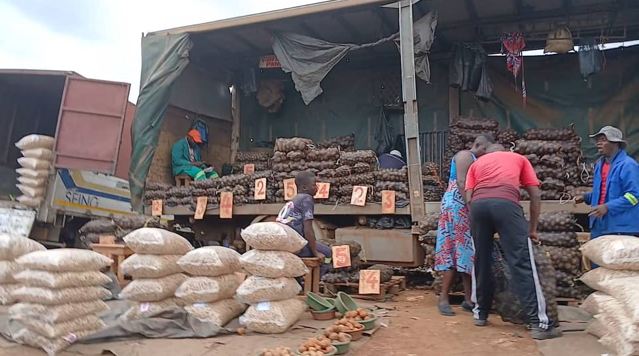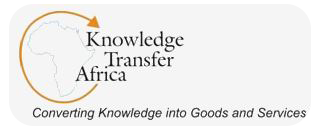If owning land and related natural resources was a panacea to development, communities and people who own fertile land would be enjoying better living standards than the landless. Evidence in many African countries is beginning to show that capacity to produce commodities and control the market is more important than owning land, water and the best climate, among other natural resources. Many farmers who have land lack other resources like knowledge, markets and other critical skills. That is why advisory services on natural resources utilization are badly needed.

Working with African mass markets can enable policy makers and development agencies to see the need for developing leasing models that value knowledge and capacity to produce. The mass market provides a closer look at forces shaping African agriculture and rural development. Through mass markets, it is possible to appreciate several barter trading leasing models including share cropping and many verbal lease agreements tied to relationships. Mass markets also reveal why capacity assessment of farmers has to remain fluid in line with available natural resources. For example, what is the capacity and potential of a farmer who has 200 hectares of land? How much capacity can the farmer use in the next 20 years? These questions can only be answered after thorough capacity assessment.
Capacity as a resource
Without examining capacity levels of different farmers, it is difficult to make projections of the agriculture sector in a competitive environment. For instance, when there are 500 000 smallholder farmers, it is difficult to make useful projections based on hectares of land occupied or used by each of them without understanding each farmer’s capacity as a resource in itself. If a farmer allocates 20 percent of his/her resources to the land, what equipment is required and what is the farmer’s growth pathways for the next five years? Other important elements include sources of income and remittances. What are other demand sources like medical fees or extended family? How do farmers allocate resources to different needs such as school fees and others? If these issues are not clear, farmers end up locked in parasitic contract models that pretend to be helping when they are increasing dependence.
Advisory services related to capacity assessment can clarify opportunities in relation to natural regions, existing resources and capacity, leading to progressive agricultural transformation by directing attention to other value chains with latent potential. For instance, besides field crop farming, farmers can see opportunities in goat farming, indigenous chickens and other invisible but viable ventures.
Toward an investment opportunity assessment
Export potential cannot be explored without understanding the capacity of producers. Key elements of an investment opportunity assessment include the following:
- Historical performance of the farmer.
- Passion – This is based on being on the ground all the time and appreciating challenges.
- Risks being taken at an individual level through contributing personal resources. If not farming, where else would you have put your money?
- Commitment – This is seen through personal investment versus external resources (how much of your skin is in the game?).
- Working capital (cash resources).
- Equipment (usable).
- Utilization levels of available land.
Succession planning pathways and knowledge about the market
Assessing farmers on the land can reveal gaps and opportunities for leasing. Capacity and availability as well as suitability (age – old farmers can have limits in physical and mental as well as intellectual ability to learn new things like technological changes in agriculture. Capacity assessment can also ensure succession planning connects with ability to do strategic planning in terms of what skills exist within the family to be able to take the business forward. This is very important because leases need succession pathways. If there is no a successor, a long-term lease will eventually become redundant. Regarding knowledge about the markets, how much understanding do farmers have about other markets besides institutional markets mandated by the government such as grain marketing board and supermarkets?
How do farmers use revenue from agriculture? This brings out experience in ways that facilitate the business of farming as well as the burden that might be exerted on income generated by the agriculture business. For instance, for every 30-ton truck of potatoes harvested by the farmer, how much goes to household consumption? Such an assessment can show the farmer’s capacity or incapacity to develop. If more than 60 percent of agriculture income from a particular district is going toward social investment, that has to be reflected in figures. Agriculture should be seen as part of Gross Domestic Product (GDP), with figures going directly to the economy compared to what is financing social investment. Without such evidence, it is possible for governments to under-value agriculture’s contribution to the economy. To what extent does social investment like educating their children allow farmers to develop? A big part of the economic picture is missed when the labor component that comes as social investment is not captured.
The market should determine the structure of land ownership and lengths of leases
The individual ownership of agriculture resources can be problematic in many circumstances because it may give first mover advantages to the current generation without thinking about future generations. Those who think land ownership is more important do not realize that it can lock resources that farmers would alternatively use to kick-start agribusiness without worrying about ownership. For instance, leasing or renting can enable resource utilization as working capital. Previously it was important to own land because there was a very strong relationship between production and markets. Farmers knew they were producing for particular markets with whom they had strong bondages.
Instead of worrying about owning land, future-oriented farmers are now more interested in owning and controlling local, regional and global markets so that every production step is informed by market dynamics. More than owing land, markets now increasingly determine what to produce, for whom, where and when? A young farmer can choose to do goats in Burkina Faso, fruits in Tanzania, horticulture in Angola and grapes in South Africa provided somebody needs those commodities irrespective of where they are produced. This is similar to contract farming model in which farmers are already aware of the market. Such lease-driven models can lead to full utilization of resources by farmers and communities because they will be determined to ensure production meets demand than using land for speculation.
Charles@knowledgetransafrica.com / charles@emkambo.co.zw /
Website: www.emkambo.co.zw / www.knowledgetransafrica.com
Mobile: 0772 137 717/ 0774 430 309/0712737430
